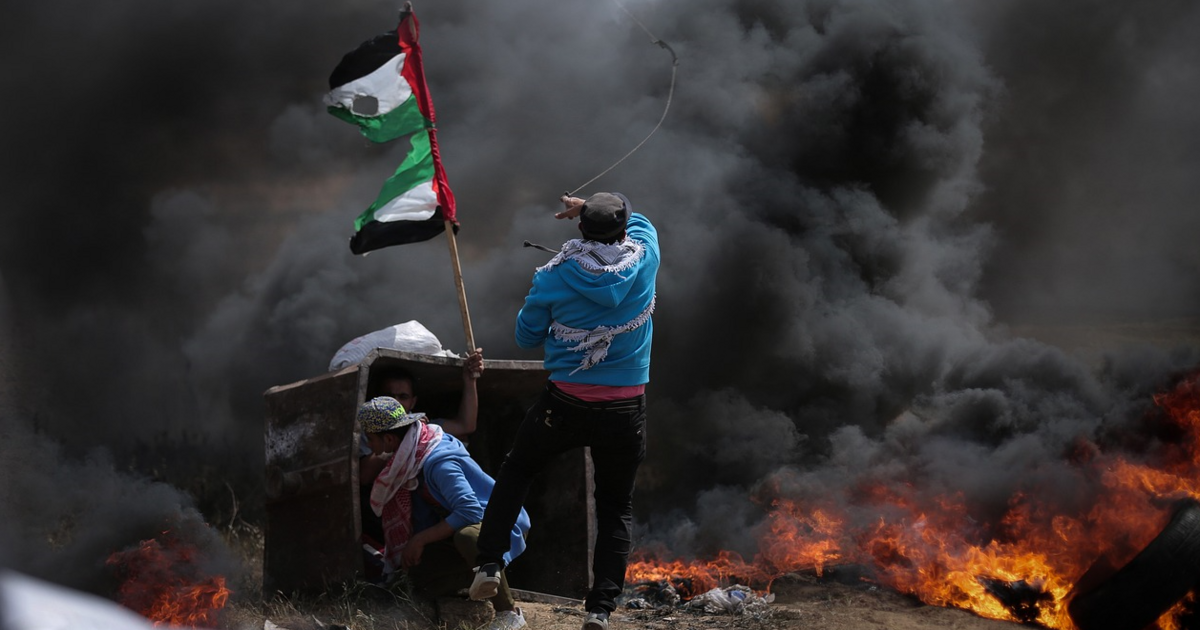The Humanitarian Disaster Called "Gaza"
What do recent events in Gaza tell us about the situation of the residents there?
February 8, 2008

The recent images of hundreds of thousands of Palestinians flooding across the wall that separates Gaza from Egypt was certainly dramatic. But what did it illustrate?
According to some, it was an “illegal invasion” by people in search of cheap food, fuel and cigarettes. Others, including Egyptian President Mubarak, viewed it as a dramatic demonstration of how desperate life in Gaza has become as supplies of food, medicine, clean water and gas run out due to Israel’s blockade of the area.
To the first group, it underscored how impossible it is to make peace with the Palestinians so long as Hamas controls Gaza.
To the second group, it was a potent symbol of how bankrupt Israeli policy is for seeking to undermine Hamas through the collective punishment of the people of Gaza.
To me, the images illustrated several things:
First, the Gaza Strip really has become a virtual prison for the 1.2 million people who live there. The Palestinians in Gaza are not starving, but they are being collectively punished by both Israel and the international community for having chosen Hamas over Fatah in the January 2006 parliamentary elections.
Because all crossings in and out of Gaza have been closed, Gaza is losing $1 million a day in trade. The unemployment rate has reached at least 55%, including the 75,000 private sector employees who have lost their jobs because factories cannot import raw materials or export final goods.
The closures have further caused critical shortages of food items, pharmaceutical supplies and spare parts for essential infrastructure maintenance.
Most recently, Israeli cuts in the supply of electricity and fuel to Gaza in response to the continued Palestinian rocket attacks into Israel has resulted in shortages of electricity and diesel fuel that are critical to the functioning of hospitals, schools, as well as water and sewage treatment plants.
The situation for the average family and children is particularly dramatic. Parents are being forced to sell their household belongings in the market to feed their families because the prices for available goods have sky rocketed.
Given both the high inflation and unemployment rates, the United Nations Office for the Coordination of Humanitarian Affairs (OCHA) reports that 85% of the population in Gaza now relies on food handouts.
The World Bank further reports that there has been an increase in chronic disease and malnutrition among children under five in the Gaza Strip. Studies further show an increase in children suffering from diarrhea, insomnia and anxiety.
Although the delivery of some assistance to civilians in the Gaza Strip continues, relief organizations report that access and funding issues are hindering their ability to adequately respond to children’s most basic needs.
Because of the restrictions, for example, no new schools can be built and existing ones are required to double shift in order to allow more children into class. However, this means that all children lose two hours of education.
Schools also have run out of paper, pens and other materials, and because of the electricity shortages have no lights or heating in the classrooms, which affects the quality of the education children are receiving.
My second observation watching the signs of joy, even elation, on the faces of Gazans as they streamed across the border into Egypt was that — even while they may not be starving for food — they are starving for physical freedom.
The human rights based agenda of freedom and democracy that Israel espouses for itself, and the United States champions for the world at large, is not being applied to Gaza.
All the main political players in Gaza are committed to finding solutions through violence — and this observation does not apply only to Hamas and Fatah. It also applies to Israel and the United States.
When Palestinian militants blew holes in the wall and pulled it down, virtually the entire population of Gaza city took off for Egypt. They were not expressing their support for Hamas — or for the violent action the militants had taken. They were expressing their growing frustration with their dehumanized situation.
They were eschewing the violence being used against them by all the political actors involved and speaking with their feet. The message: “We don’t want to take sides. All we want is to get out of this situation and be free.”
Watching all those people crossing over the downed wall makes it plain that the world can no longer afford to ignore the situation in Gaza.
Israel must find a way to remove the restrictions — and the United States needs to find a way to include the Gaza Strip (and therefore Hamas) into the peace process without undermining Israel’s sense of security.
As a first step in this direction, the international community needs to make every effort right now to get the parties to the conflict to achieve a mutual ceasefire that entails the cessation of Palestinian rocket launches into Israel, Israeli ground and air attacks into Gaza — and the attacks by both sides on children and the infrastructure serving them.
Neither the United States nor Israel can continue to say that innocent people should not be suffering, but that their suffering is due to Hamas not them. Innocent Palestinians are suffering and there is plenty of blame to go around.
While Hamas needs to recognize Israel, the United States and Israel need to pay more than lip service to the legitimate demands by the Palestinian people for self-determination.
Takeaways
The Gaza Strip really has become a virtual prison for the 1.2 million people who live there.
The signs of joy on the faces of Gazans showed that even while they may not be starving for food, they are starving for physical freedom.
The people of Gaza were not expressing their support for Hamas. They were expressing their growing frustration with their dehumanized situation.
It was a potent symbol of how bankrupt Israeli policy is for seeking to undermine Hamas through the collective punishment of the people of Gaza.
Innocent Palestinians are suffering and there is plenty of blame to go around.
Read previous
Pakistani Women and Democracy (Part II)
February 7, 2008
